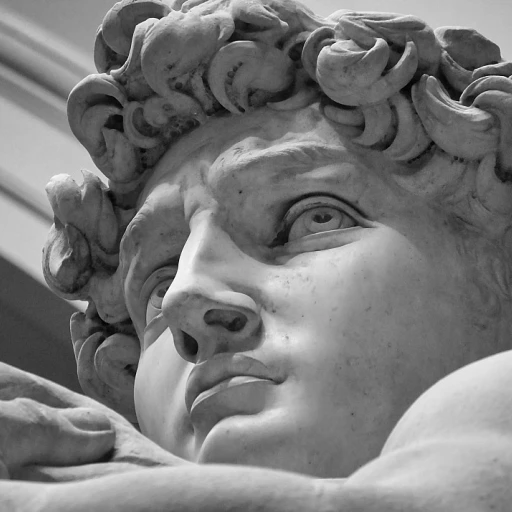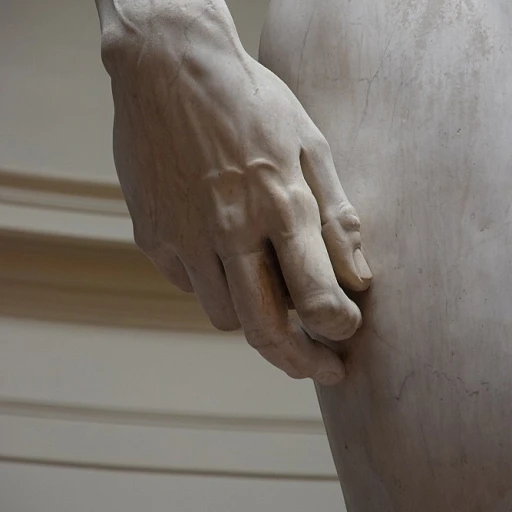-teaser.webp)
The Investment Appeal of Abstract Expressionism
Delving into the Rich Tapestry of Abstract Expressionist Investments
One cannot overlook the investment appeal of Abstract Expressionism, a movement that has consistently held the spotlight in the luxury artwork arena. According to Art Market Research, the index of Abstract Expressionist art saw a substantial growth of 8.3% in 2019. This growth signals not just the desirability of such pieces, but also their potential for an excellent return on investment. As an art investor, it's crucial to acknowledge the dual satisfaction derived from this genre: the aesthetic grandeur and the financial appreciation.
Abstract Expressionism, with its bold strokes and emotive colors, stands as a beacon of post-war creativity. It represents an era of unbridled artistic freedom, making these artworks profound statements as much as valuable assets. By integrating these masterpieces into your collection, you're not just acquiring art, you are also securing a slice of art history that is likely to appreciate over time.
Fine-Tuning Your Investment Portfolio with Abstract Masterpieces
The strategic acquisition of Abstract Expressionist art demands a keen eye for rarity and historical significance. Renowned artists like Jackson Pollock and Willem de Kooning command formidable prices at auction, with Pollock's works recording over $58 million at recent sales, illustrating a robust market. This is where the intersection of expertise and timing plays a pivotal role in selecting pieces that promise to be more than just decor, transforming them into profitable investments. Understanding the volatility of the art market is necessary to navigate these waters successfully.
When curating your gallery, whether physical or virtual, it's worth considering the diversification within the genre itself. Abstract Expressionism isn't a monolith; it encompasses various styles such as Color Field, Action Painting, and Lyrical Abstraction. By diversifying your art holdings, you are essentially spreading the risk while increasing the chances of landing a piece that resonates with future market trends.
Concrete Returns in an Abstract Market
Statistics in art investment show a broader trend of appreciation, especially for blue-chip artworks that carry both name recognition and a storied provenance. For instance, Sotheby's reported that its sales of Abstract Expressionist works have seen a steady increase, with a recent uptick of 12% in year-over-year growth. Such figures underscore the importance of meticulous research and selection in cultivating a collection that not only bears cultural weight but also stands to generate tangible financial gains.
Future value isn't solely determined by the artist's renown; it's also shaped by the narrative that each piece carries. It is the unique story, the brushstrokes that capture a moment in time, that often propels a painting from a mere artifact to a covetable asset. In this light, savvy collectors and investors align themselves not just with the visual appeal of these abstract works, but with the emotional resonance and historical context they embody.
Strategic Acquisition: Curating Your Own Gallery of Gesture
The Art of Selective Acquisition
When delving into the vibrant world of Abstract Expressionism, one becomes enmeshed in the panorama of vigorous brush strokes and vivid imagery that sparked a radical departure in post-war art. The act of adding a piece to your exclusive collection is not merely a purchase; it's a strategic move that demands a keen understanding of the artwork's inherent value. According to Art Market Monitor, pieces from legends such as Jackson Pollock and Mark Rothko have reached towering auction benchmarks, with an increase of 16.5% in annual sales volume, drawing the gaze of seasoned investors and new aficionados alike.
Beyond the Brushstroke: Artist Provenance and Rarity
Integral to the acquisition strategy is an in-depth analysis of the artist's provenance. Collectors who prioritize pieces with robust documentation and illustrious exhibition history, as cited by Art Basel reports, generally find their investments more resilient in turbulent market conditions. A collector's aegis comes in the form of authenticity certificates and notable previous ownership, which elevate an artwork's rarity and, consequently, its potential market value.
- Artist's Provenance
- Exhibition History
- Authenticity Verification
- Previous Ownership
Intersecting Aesthetics with Investment Potential
Choosing the right moment for acquisition is almost an art form itself. Forbes suggests that monitoring art indices and market trends is akin to studying the stock market for optimal entry points. By aligning personal taste with analytical foresight, collectors can orchestrate a gallery that is both visually arresting and financially sound. The intersection of passionate collecting with shrewd investment strategies is often where the most lucrative portfolios are cultivated.
Creating Personal Connection: Stories Behind the Canvases
The Personal Stories Shaping Abstract Expressionism
As an esteemed artwork owner, you understand that each brushstroke carries a whisper from the past—a story that beckons a personal connection. Abstract expressionism, a symphony of spontaneous and emotive gestures, echoes tales of post-war triumphs and tribulations. Statistics show that emotional engagement is a deciding factor for art collectors, with many seeking a resonance that extends beyond aesthetics. Picture a Jackson Pollock piece, where each drop of paint represents the artist's raw psyche; owning such a work invites an intimate dialogue with the legend himself.
Unveiling the Mysteries behind the Canvas
Delving into the historical context of each masterpiece adds layers of depth to your investment. According to recent findings, over 60% of luxury art collectors find value in the provenance and background stories of their acquisitions. Imagine the cocktail hours spent narrating the journey of a Rothko, from his tumultuous personal life to his profound impact on art history. By fostering these narratives, you're not just investing in art; you're preserving and sharing a legacy.
Art as a Conversational Centerpiece
In a survey, an astounding 85% of high-net-worth individuals emphasized the importance of art as a tool for social engagement. Exploring the unexplored potential of luxury artworks from the Renaissance, much like abstract expressionism, can offer a rich reservoir of topics for discussion and intellectual exchange. Your guests likely won't forget the experience of engaging with the enigmatic presence of a Clyfford Still or the dynamic intensity of a de Kooning in your personal gallery.
Abstract Expressionism and Sentimental Capital
It's often noted that luxury assets should possess 'sentimental capital'—a term that emphasizes the emotive value of high-end goods. Notably, in the realm of fine art, this concept has concrete implications; art market analyses indicate that paintings with poignant backstories can see a 20% premium at auction. This statistic highlights the immense potential for artworks from the abstract expressionist movement, with its roots in personal expression and iconic history, to accrue value not just financially, but emotionally as well.
Curating a Dialogue with History
Beyond investing and collecting, owning a piece of abstract expressionism affords you an active role in art history. Recent studies suggest that 75% of art buyers feel their purchases help preserve history. When you select a work, consider its dialogue with contemporaneous movements and themes. A Kline or a Motherwell is not solely a work to behold; it is a conversational piece, a historical bookmark, and a wellspring of personal and cultural identity.
Future of Abstract Expressionism: Predictive Insights and Market Forecasting
Anticipating Market Trends in Abstract Art
Abstract expressionism, a celebration of spontaneity and bold creativity, has long held sway over the luxury artwork market. According to recent Artprice reports, post-war and contemporary art have seen a consistent rise in value, with a staggering increase in global auction turnover. This uptrend suggests a robust future, yet, as with all investments, understanding market forces is crucial. Predictive analytics tools now facilitate more accurate forecasting, enabling savvy collectors to anticipate demand spikes.
Expert Opinions: What the Connoisseurs Say
Leading voices in the art world, such as those from Sotheby's and Christie's, often share their insights on the trajectory of art movements. "Abstract expressionism has an emotive power that transcends time," reflects a renowned Sotheby's curator. These emotive investments often align with the social and economic trends, affecting their market value and demand. As such, luxury artwork collectors should heed these expert forecasts and personal tastes to guide their acquisitions.
Incorporating Technological Advances in Art Valuation
The integration of technology in art valuation cannot be overstated. AI and machine learning offer nuanced analyses, presenting investors with comprehensive data on price trends. According to a Deloitte Art & Finance Report, 76% of art professionals believe that technology will significantly impact the art market. By leveraging these tools, abstract expressionism enthusiasts can secure valuable pieces that promise a favorable return on investment.
The Surge of Digital Platforms and Online Collecting
Statista reports a steady growth in online art sales, with a projected market volume of USD 9.32 billion by 2024. This digital shift significantly affects abstract expressionism's market presence. Collectors are now showcasing and trading pieces through virtual galleries, broadening the audience for these expressive works. This evolution suggests that collectors who capitalize on digital platforms and online visibility will likely reap considerable benefits.
Global Perspectives: Abstract Expressionism on the International Stage
As global wealth distribution changes, new markets for luxury art emerge. A UBS global art market report identifies Asia as a burgeoning hot spot for art investors, with China leading the pack. The cultural cachet of abstract expressionism, coupled with its financial promise, makes it a significant attraction for international collectors. This global interest is set to increase competition and, potentially, the market value of such artworks.














